January 7, 2021
Abby Nuttall
Driver Articles
Although most of us think of cars as the main mode of transport on roads there are a lot of users in other vehicles, on horseback and even on foot. There are eight groups of other road users that we’ll look at today which are:
- Lorry drivers
- Bus drivers and passengers
- Tractors
- Learner / Young Drivers
- Cyclists
- Motorbikes
- Horse Riders
- Pedestrians
This isn’t every type of user you’ll encounter on the road, but they are the most common ones on UK roads. We are going to look at how car drivers can help to keep themselves and the other road users safe when driving near each of these groups.
Lorries
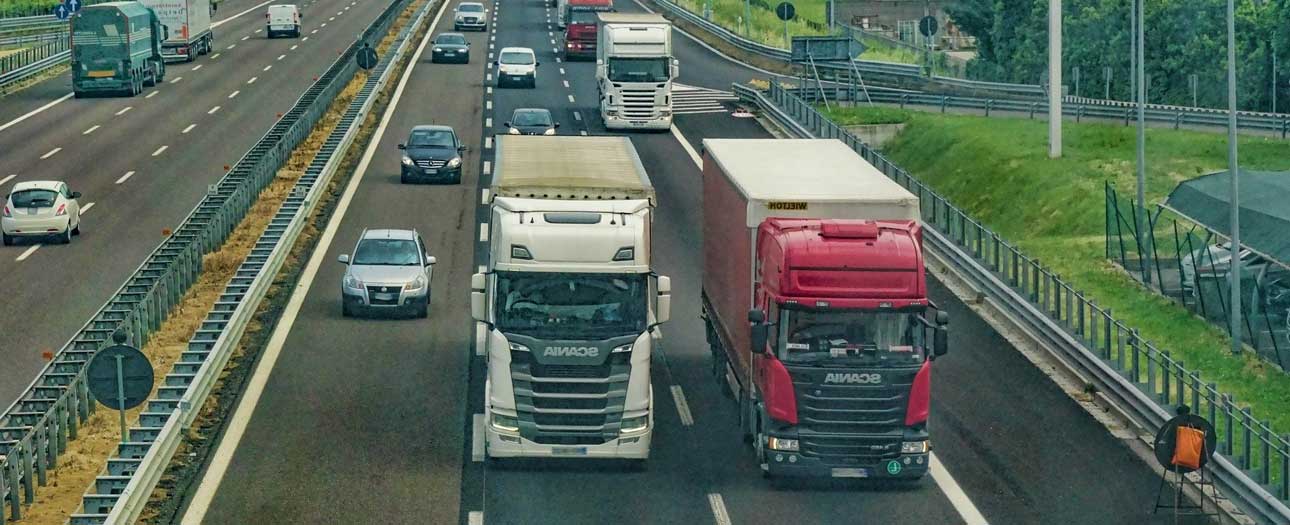
Lorries are a very common sight on UK roads and you’re likely to encounter one on most journeys so it’s important to keep in mind the extra considerations you should give to them.
As they are larger vehicles they have a wider turning circle. This wider turning circle might mean that they have to straddle two lanes or be in the left lane even if they are taking the third exit at a roundabout. You should allow them extra room when turning and at roundabouts.
Alongside the wider turning circle, larger vehicles also have a larger blind spot, which is something you should be conscious of, especially if you are overtaking or passing them.
The UK is one of the few countries in the world who drive on the left-hand side of the road and so have right-hand drive vehicles. A lot of goods are imported and exported from Europe to the UK and one of the main ways these are transported is via a lorry, and so you should be aware that some lorries may have a European cab which will be left-hand drive. You can usually spot these by the number plate. If you are driving near a left-hand drive lorry then you will need to be aware that their blind spots as these will be slightly different.
When driving behind a lorry we advise to leave a wider gap, this not only accounts for the driver’s blind spot but also gives you some distance and time to react as you cannot see the road ahead and potential hazards on it like you can with a smaller vehicle.
Lorries are heavier vehicles and so usually slow down when driving uphill. You should still remain a safe distance from them if they do slow down and only overtake when safe to do so.
Buses
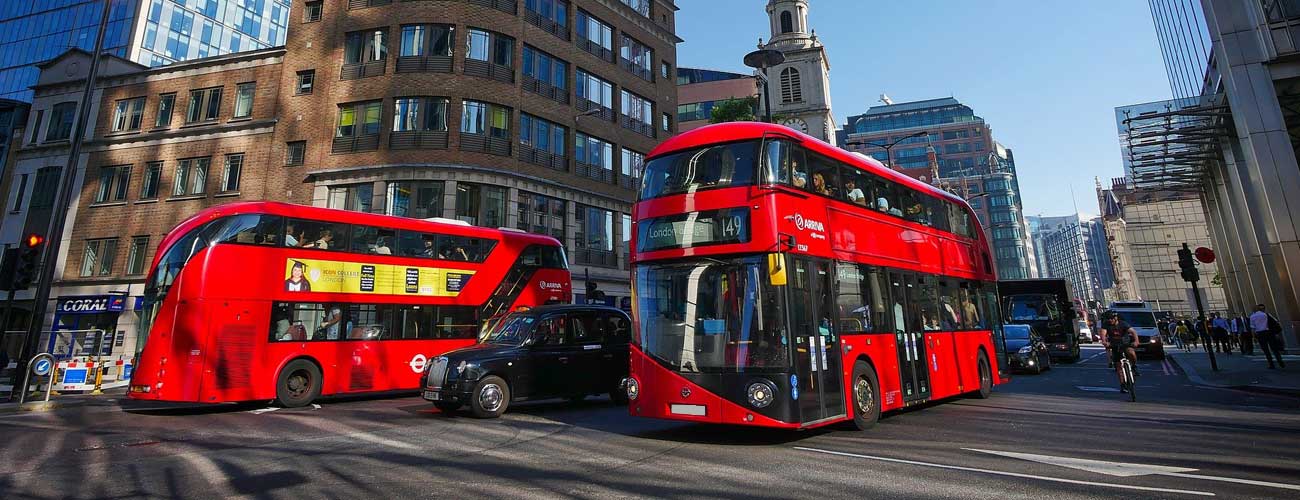
The second large vehicle you are most likely to encounter on the road is a bus.
Like lorries you will need to be aware of their larger blind spots and turning circles, allowing extra room for these.
As buses often stop and start to allow passengers to get on and disembark you should be aware if nearing a stopped bus that they may be looking to pull back out into traffic. As per the Highway Code, you should give priority to buses when they are signalling to rejoin traffic, provided it is safe to do so.
When passing a bus stop you should also be aware of passengers that have gotten off the bus and could be looking to cross the road.
You should never drive in a bus lane during its operating hours or use a bus stop to park or even stop briefly, as your vehicle will become a hazard for other road users if a bus cannot safely park in a designated bay.
Tractors
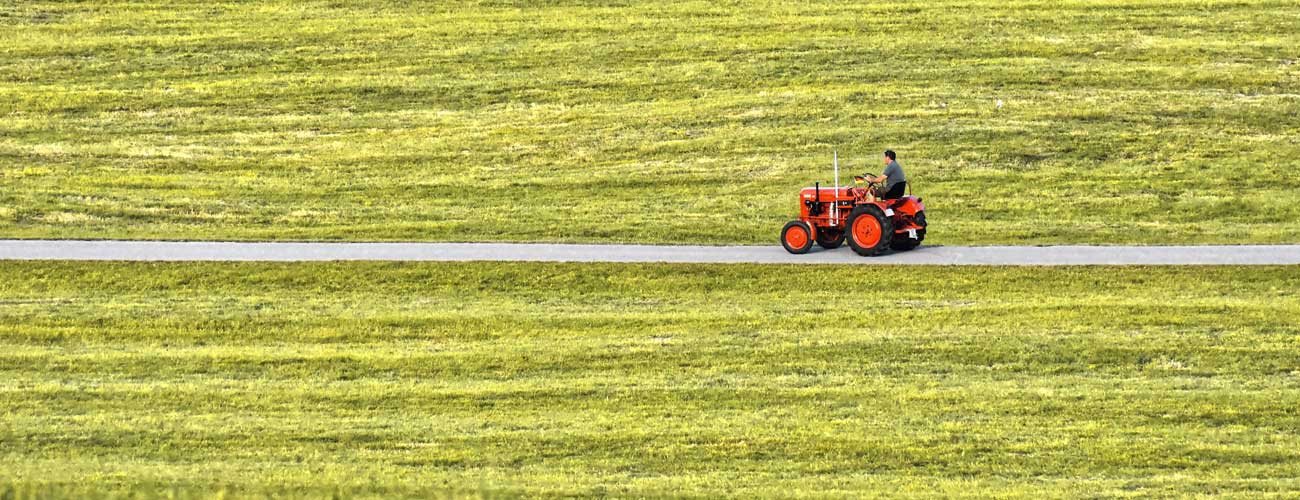
In the UK we see a lot of tractors during harvest time, moving between fields and farmland, as well as less often during the rest of the year. So, it is important for divers, especially those driving in rural areas, to know how to safely drive around them.
Tractors are not able to drive as fast as other road users and so you should always be aware of this when approaching one and reduce your speed appropriately.
Tractor drivers are advised to pull over when it is safe to do so if there is a large queue of vehicles forming behind them, so you should be conscious that they may slow down and pull off to allow you to pass.
If you are following a tractor you should maintain a safe distance and only overtake them when you can clearly see the other side of the road and it is safe for you to do so.
Learner / Young Drivers
In the UK you can obtain a provisional driving licence at 17 years old and as soon as you pass the theory and practical tests you can drive on the road without supervision. This means that the youngest drivers on the road are just 17.
Young drivers are typically classed as those under 25 years old, and they’re considered a more at-risk group for driving accidents and bad habits for a number of reasons.
These include:
- Brain Development – the pre-frontal cortex, which is the part of your brain responsible for rationality, does not reach full maturity until your mid-20s. Alongside this, the limbic region, which is associated with emotional responses, has been shown to be overactive between the ages of 15 and 24 years old. Reduced rationality and increased limbic activity means that drivers in this age range are more likely to be influenced by peer pressure or engage in thrill-seeking behaviour.
- Inexperience – they’ve had less time on the road and until they pass their practical driving test have been driving with the security of having a driving instructor who will act in emergency situations. Having spent less time on the road they’ve also encountered less potential hazards so when they face them may react inappropriately.
- Teenage Passengers – Young drivers can be easily distracted if they have a group of friends in the car with them, especially if they are not yet drivers themselves as they might not understand how their actions could be distracting. The driver might also feel pressured by their peers to take engage in riskier behaviour like speeding.
- Mobile Phones – younger drivers are typically seen as those who are more likely to use their phone while driving, this is because they are the generation who uses their technology the most. Over the last decade or so the use of mobiles has become more prevalent amongst older generations but this is still a view held by many.
- Driving Impaired – similarly, it is younger drivers who are considered to be the most likely to drive whilst under the influence of drink or drugs.
- Over Confidence – Newly passed drivers are likely to suffer from overconfidence in their ability behind the wheel which leads to them overestimating their ability handling hazards.
Learner Drivers
Learner drivers must have another adult in the vehicle with them, providing guidance and also assessing hazards, who has held a driving licence for a number of years, even if they are not with a driving instructor. They must also display an L plate on the front and rear of the vehicle so that other road users can easily identify them.
If you are driving near a learner driver then you should always allow them plenty of room and be patient if they are slow to make manoeuvres or make a mistake.
Newly Passed / Young Drivers
As well as following the usual driving rules and guidelines there are a few additional steps you can take when following a driver who you can see is a newly passed driver, with a p plate, or a young driver to help keep yourself and them safe.
Leave a little extra space when following them, and don’t tailgate them. This not only allows them more room and time for their manoeuvres but also gives you more room and time to react to their actions.
Be aware that they are less experienced so might make an error in judgement or do something incorrectly, and don’t get angry if they do as this can impair your own judgement and make a situation worse.
If you are in a household with a young driver then there are also a few things you can do to help them. One is to go out with them to help build their confidence and advise on how they can react to potential hazards.
You could also put in place a voluntary code of practice to help reduce risk factors, for example setting a curfew or passenger limit.
When they are deciding on insurance providers you can also help them to choose the best provider for them and look at options that include black boxes which provide driving metric data they can review and see any areas that need working on.
Cyclists
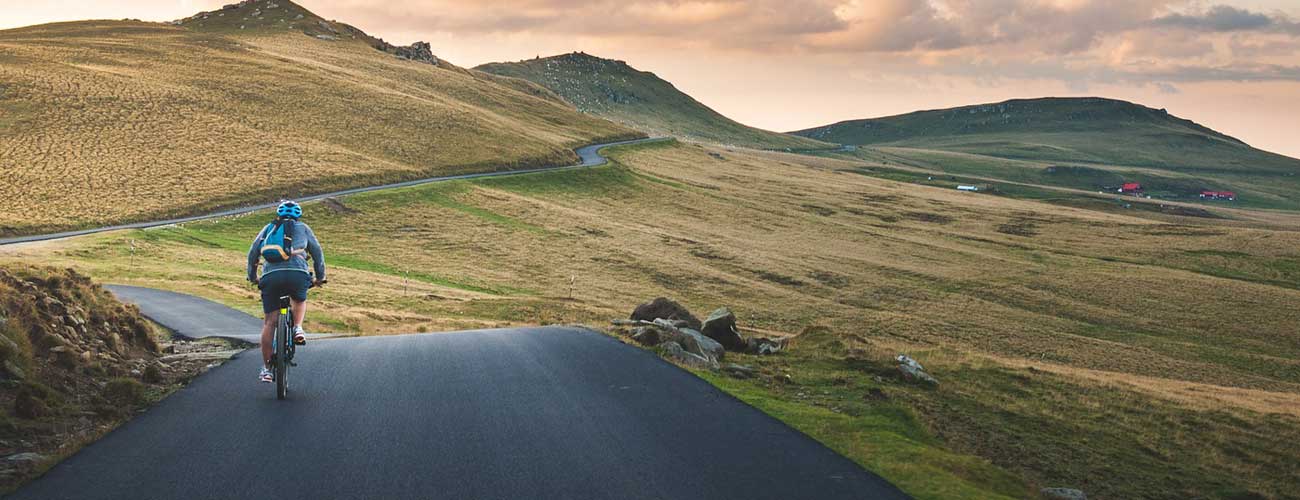
Over the past ten years, we’ve seen a significant increase in the number of cyclists on our roads. This is in part due to the rise in popularity of the sport following the 2012 London Olympics and a move by national and local governments to encourage people to use greener transport options.
Many city and town centres have put in place cycle paths, tracks and lanes on the road. When one of these is not available cyclists should be on the road, not the footpath used by pedestrians so drivers need to be aware of then and how they can help keep cyclists safe.
You should always allow a cyclist plenty of space, whether you are following or overtaking. You should also make sure not to speed to fast when passing a cyclist as the movement of air produced by your vehicle can be a hazard for them.
Cyclists are advised to wear light coloured and fluorescent clothing during the day and reflective clothing at night to make them easier to spot, however for some riders this is not always possible so you should be aware that cyclists might be wearing darker clothing which makes them harder to spot.
You should always check your blind spots and mirrors for any cyclists when manoeuvring as they are smaller than other road users so not as obvious to see. If you are parking your car on a road you should also check for any approaching cyclists before opening your door.
At night cyclists are required to have lights on their bikes, a white light at the front and a red light at the back. These might be flashing lights and will be a lot smaller than the headlights or rear lights that you usually see on other vehicles. When driving at night you should keep this in mind and make sure that if you do see a light you slow down as appropriate.
If there is a cycle lane on the road then you should not driver or park in this.
Where cyclists have a cycle lane on the road, at junctions and traffic lights they might also have advance stop box. If you are on any other vehicle you should not stop in this box, even if there are no cyclists in it.
Cyclists can ride two side by side if they are not on busy roads, and this can help a less confident or younger rider feel more comfortable if the more experienced rider is beside them. Don’t get annoyed if you are driving and see two cyclists riding like this, it is likely for their safety and so you should allow them space and only overtake when safe to do so.
Cyclists are taught not to ride their bikes too closely to the edge of the road, this is to prevent them from hitting drains or riding off the tarmac where there’s an uneven road edge which can cause them to fall which could cause a larger accident. Not being at the very edge of the road also makes a cyclist more visible to other road users. The usual guidance is to ride about three foot from the edge of the kerb and you should allow them room to do so, even if you are looking to overtake them.
At a roundabout cyclists are advised to stay in the left-hand lane, even if they are turning to the right, this is so that they have minimum impact on other road users and to keep them as safe as possible. Cyclists should indicate where they are going using the hand signals, shown below, but you should always be careful when driving on a roundabout next to them not to cut them off, especially if you are turning left and they have indicated they are continuing onto another junction.
If they are turning right at a junction or off a road then cyclists are taught to come across the lane to the right-hand side of the road. This is something you should be aware of especially if you are following a cyclist and looking to overtake them in case there is an upcoming turn they could be looking to take.
We mentioned above about signals cyclists should use. The rider below is on a motorcycle but these are the same signals a cyclist would use. You should make sure you know these signals even if you do not ride a bike yourself, so you are aware of other road users intentions.
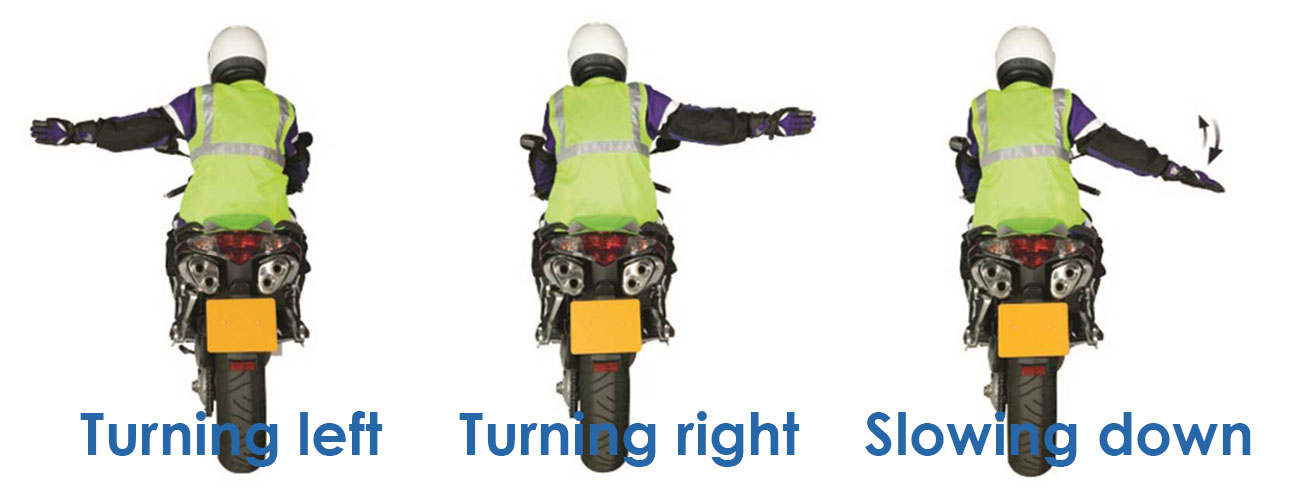
Images Sourced: https://www.gov.uk/guidance/the-highway-code/signals-to-other-road-users
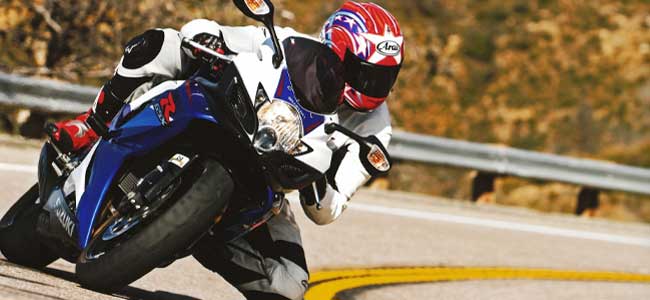
Motorbikes
A lot of the additional measures you take for cyclists are also applicable for motorcyclists. The big difference between the two is that motorbikes can reach much higher speeds.
You will still need to allow extra room even if you are overtaking a motorbike or moped and to double-check all mirrors and blindspots for a motorbike before making a manoeuvre as they are a smaller road user.
Unlike cyclists, some bikes also have indicators so they may not do the hand signals shown above. You should look for these as again these will be smaller than the usual indicator light on a car.
Horse Riders
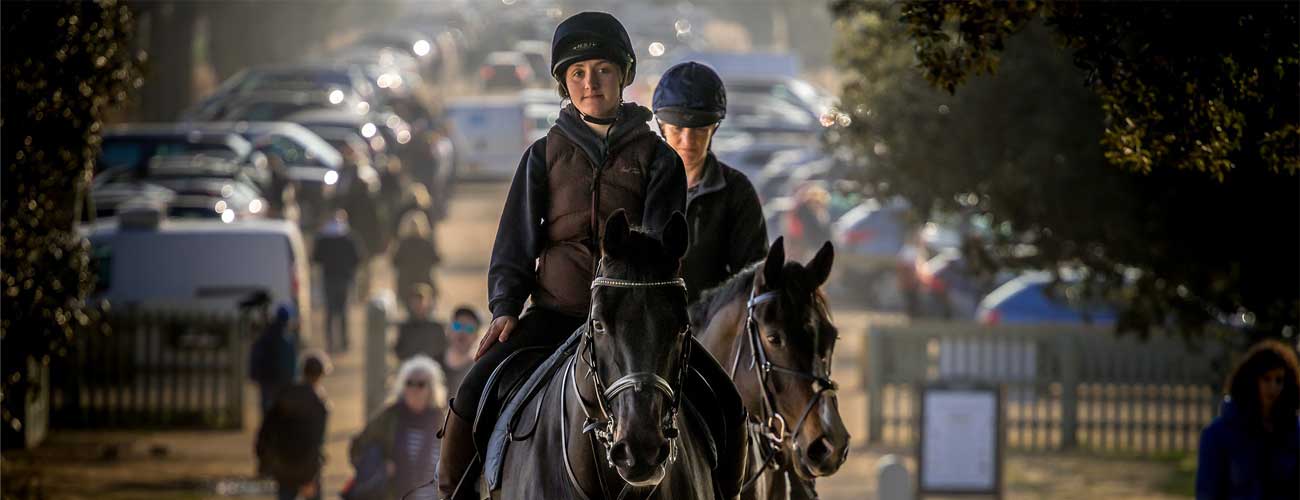
Horse riders are advised not to ride on footpaths, but they can ride on grass verges where they are suitable and not prohibited by local by-law. Otherwise, they should be on the road and so drivers need to be aware of how they can drive safely around them.
Horse riders are different from the other road users we’ve looked at before and this is because of their mode of transport – the horse.
A horse is an animal and so can become spooked or startled just like their rider, so when driving around them you should be conscious of this and try not to do anything that could shock the animal.
Whenever you are driving near a horse rider or any other animals then you should give them a lot of room, keeping a distance when following, a wide birth when passing them and you should make sure you can see them in your rearview mirror before coming back into the lane to ensure you don’t come back in front of them too closely.
You should also drive slowly when driving around animals, even if you are overtaking them. This gives you plenty of time to act if they are spooked and you could startle them with the noise of your engine when accelerating.
We recommend turning down the volume of your radio, or even muting it, until you have safely passed the horse as loud noises could irritate or startle them.
Riders are advised that two can ride side by side, which can be helpful if one of the riders or horses is young or inexperienced, as this will help keep them safe and calm when on the road.
If they are not riding side by side then riders are advised to keep a gap of about a horse’s length between them and any rider in front of or behind them. This is something you should be aware of if following more than one rider.
If you are going to overtake horse riders and they are riding in a line with safe spaces between them then you should do so when it is safe to overtake them all as cutting between the animals may startle or unnerve them.
Pedestrians
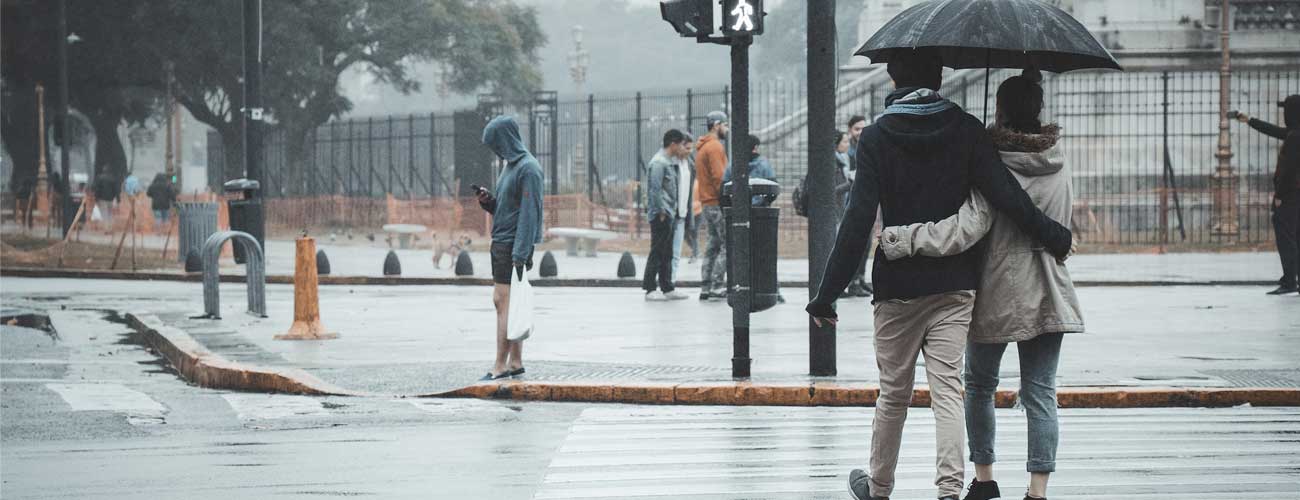
The final group of other road users we are going to look at are Pedestrians.
They are the most vulnerable users on the road as they do not have the protection of a vehicle that others do and are the smallest so often most difficult for other users to spot.
Most cities and towns have footpaths that run alongside the road which when available pedestrians should always use.
However, when there is not a footpath available pedestrians are advised to use the road, but they are not advised to do so on busier roads and it is illegal to walk on a motorway.
Where they need to walk on the road pedestrians are advised to walk facing oncoming traffic, unless they are on a large organised group walk. If on an organised group walk they should be walking on the left-hand side of the road, so in the same direction as the traffic.
When making any manoeuvre you should always check your mirrors and blind spots for pedestrians as well as bikes. You should also take the weather into account as it is harder to spot pedestrians in bad weather.
If you are driving and there are pedestrians on the road then you should slow down and pass them when it is safe to do so, leaving plenty of room for them.
If you are driving in a highly pedestrianised area then you should drive a little slower and keep an eye out for potential hazards involving pedestrians.
You should be patient at crossings, even if the light is changing and someone is still crossing the road, allow them to reach safety before driving off. When in traffic you should also ensure you do not block any crossing.
Pedestrian Crossings
There are a number of different types of crossings and as a driver you should know the rules for all of these.
Below we’ve got the main types of crossings you’ll encounter and the rules for these.
Zebra Crossings
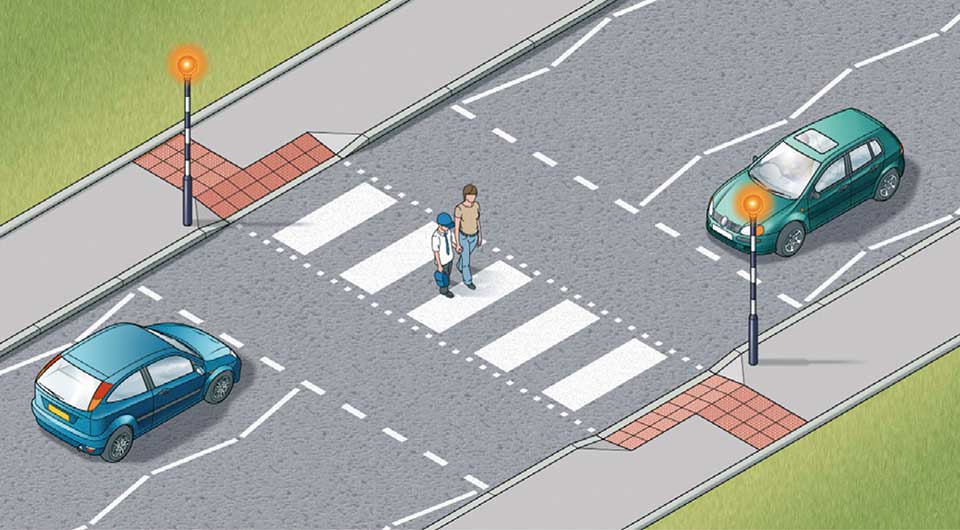
Image sourced: https://www.gov.uk/guidance/the-highway-code/rules-for-pedestrians-1-to-35
A zebra crossing is recognisable because of the white lines that form zebra-like stripes in the road and beacon lights on either side. They do not have traffic lights, but you should still stop for a pedestrian approaching one of these as pedestrians have the right of way.
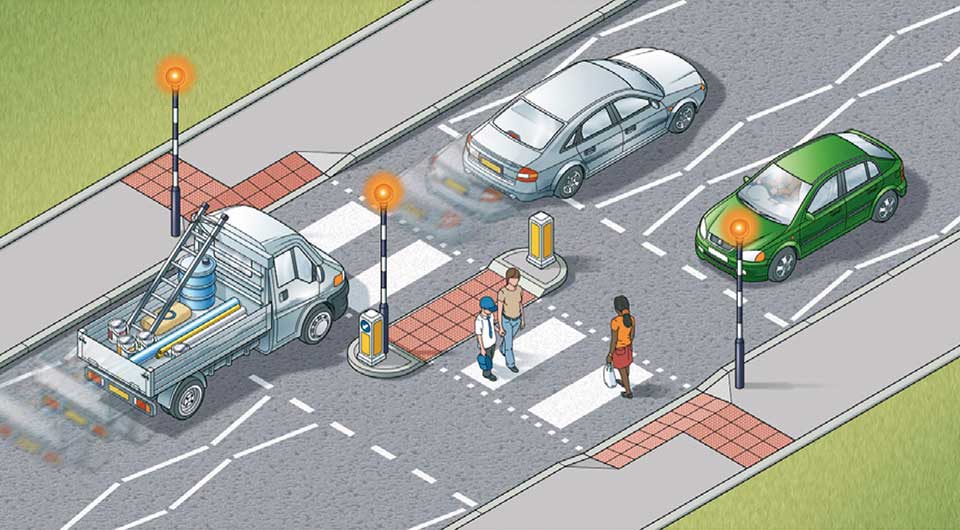
Image sourced: https://www.gov.uk/guidance/the-highway-code/rules-for-pedestrians-1-to-35
If there is an island in the centre of the road and zebra crossing this then turns it into two separate crossings. You will only need to stop if a pedestrian is approaching the part of the crossing across your lane.
Tiger Crossings
A tiger crossing is the same as a zebra crossing but has an additional cycle lane, giving cyclists the same rights as pedestrians so you will need to be aware of any pedestrians or cyclists approaching this type of crossing.
It is distinguishable from a zebra crossing as there are also yellow stripes.
Pelican Crossings
A pelican crossing has traffic lights that are operated by pedestrians by pushing a button to activate them.
When approaching these kinds of crossing you should be aware of any pedestrians waiting to cross as this indicates the lights might change before you reach them. If the signal is amber or red you should stop. If a pedestrian is crossing the road and the signal begins to change you should still wait until they reach the pavement again before driving off.
Puffin Crossings
Like pelican crossings, a puffin crossing is a crossing with traffic lights operated by the pedestrian wanting to cross. The main difference between the two is where the lights are positioned for the pedestrian, and so drivers should treat these in the same way they would a Pelican crossing, described above.
Staggered Pelican and Puffin Crossings
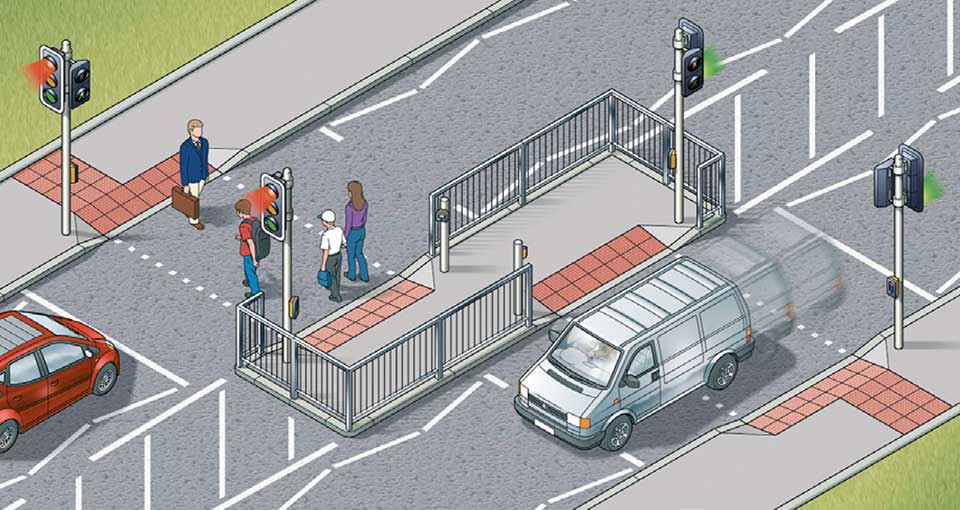
A staggered pelican or puffin crossing is where the crossings on each side of a central refuge or island in the middle of the road are not in line with each other, which makes them two separate crossings.
If you are approaching a staggard pelican or puffin crossing then you will only need to stop if the lights are amber or red on your side of the crossing, even if there are pedestrians on the other side of the road.
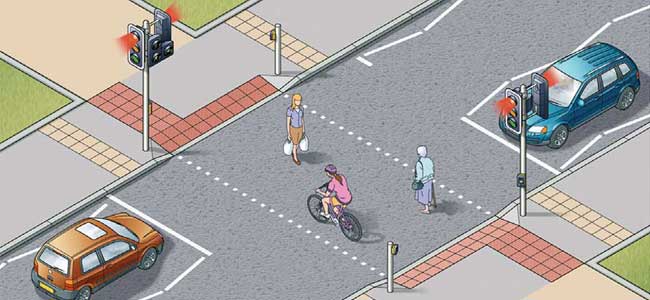
Toucan Crossings
Toucan crossings are again traffic light controlled crossings but are for cyclists as well as pedestrians.
You should treat these the same as a pelican crossing, stopping for an amber or red light and allowing anyone crossing to reach safety before driving off.
When approaching the crossing you should also be aware of anyone waiting to cross as this could indicate the lights are about to change.
Image sourced: https://www.gov.uk/guidance/the-highway-code/rules-for-pedestrians-1-to-35
Pegasus / Equestrian Crossings
These crossings are designed for horse riders. They have pavement barriers, a wider crossing space and the lights for those crossing show a horse rider.
Like pelican crossings, these are traffic lights controlled by the pedestrian or horse rider who wants to cross.
you should stop for any crossing with an amber or red light, or if a pedestrian or horse rider hasn’t quite finished crossing even if the light is green.
When approaching a crossing if there is a rider or pedestrian waiting to cross you should be prepared to stop if the lights change.
Image sourced: https://www.gov.uk/guidance/the-highway-code/rules-for-pedestrians-1-to-35
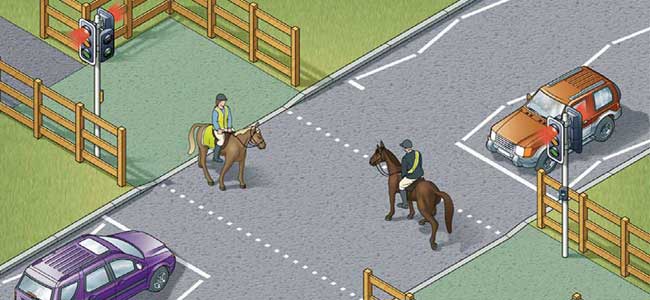
You should always obey the crossing rules provided above. Pedestrians might not always cross at a crossing, and if one does cross in an unsafe location then you should always slow down and stop where necessary.
We hope that you’ve found this guide helpful to keep yourself and other road users safe.
